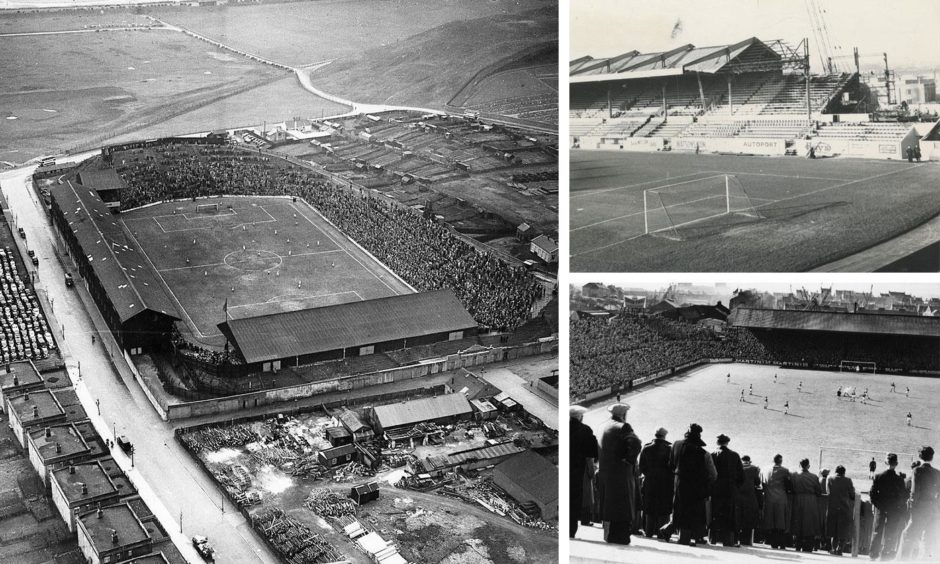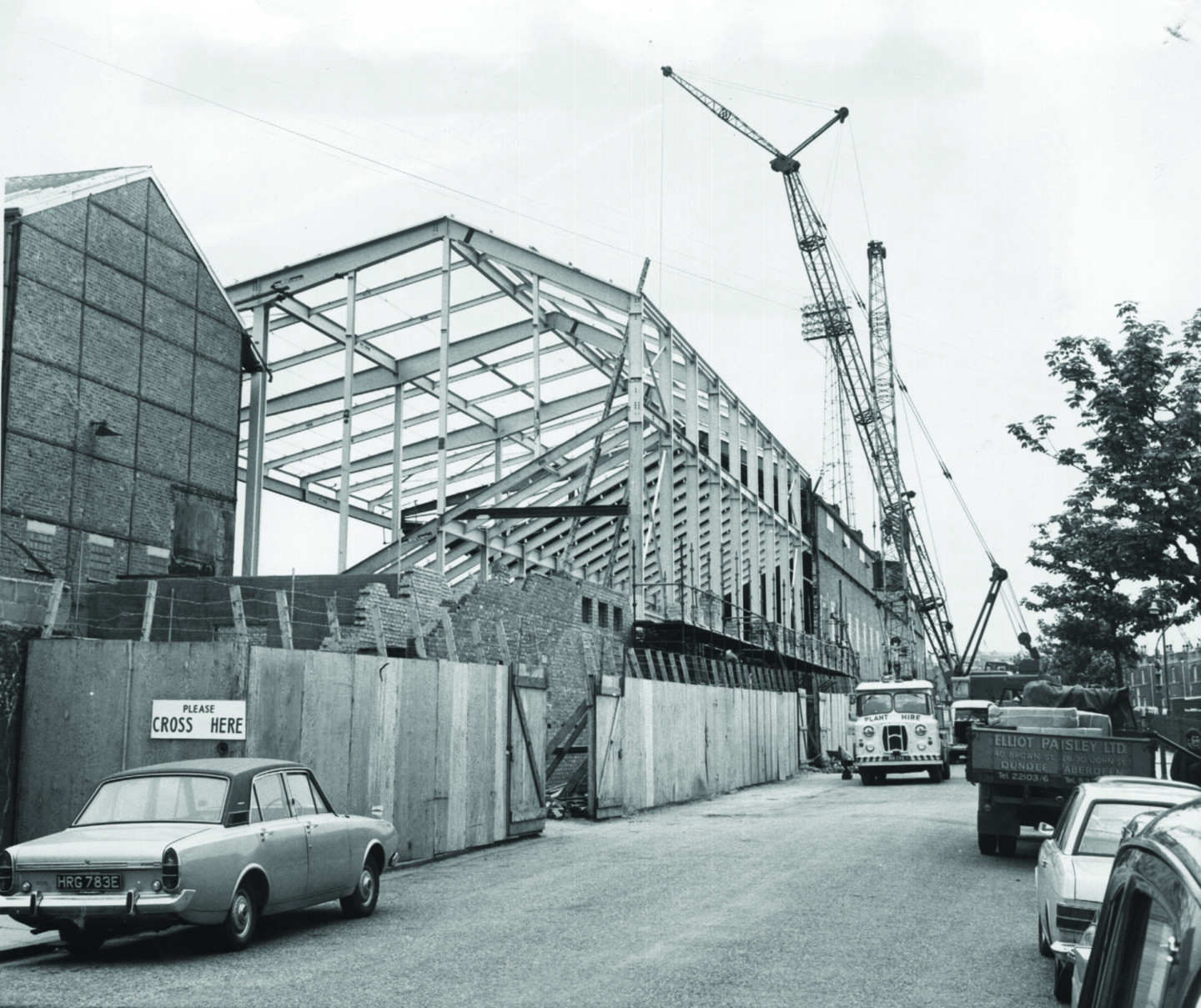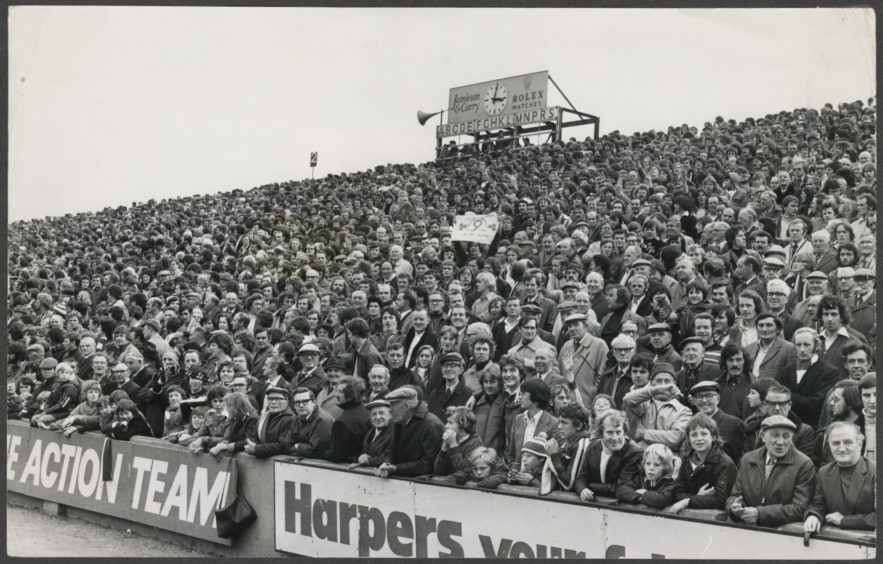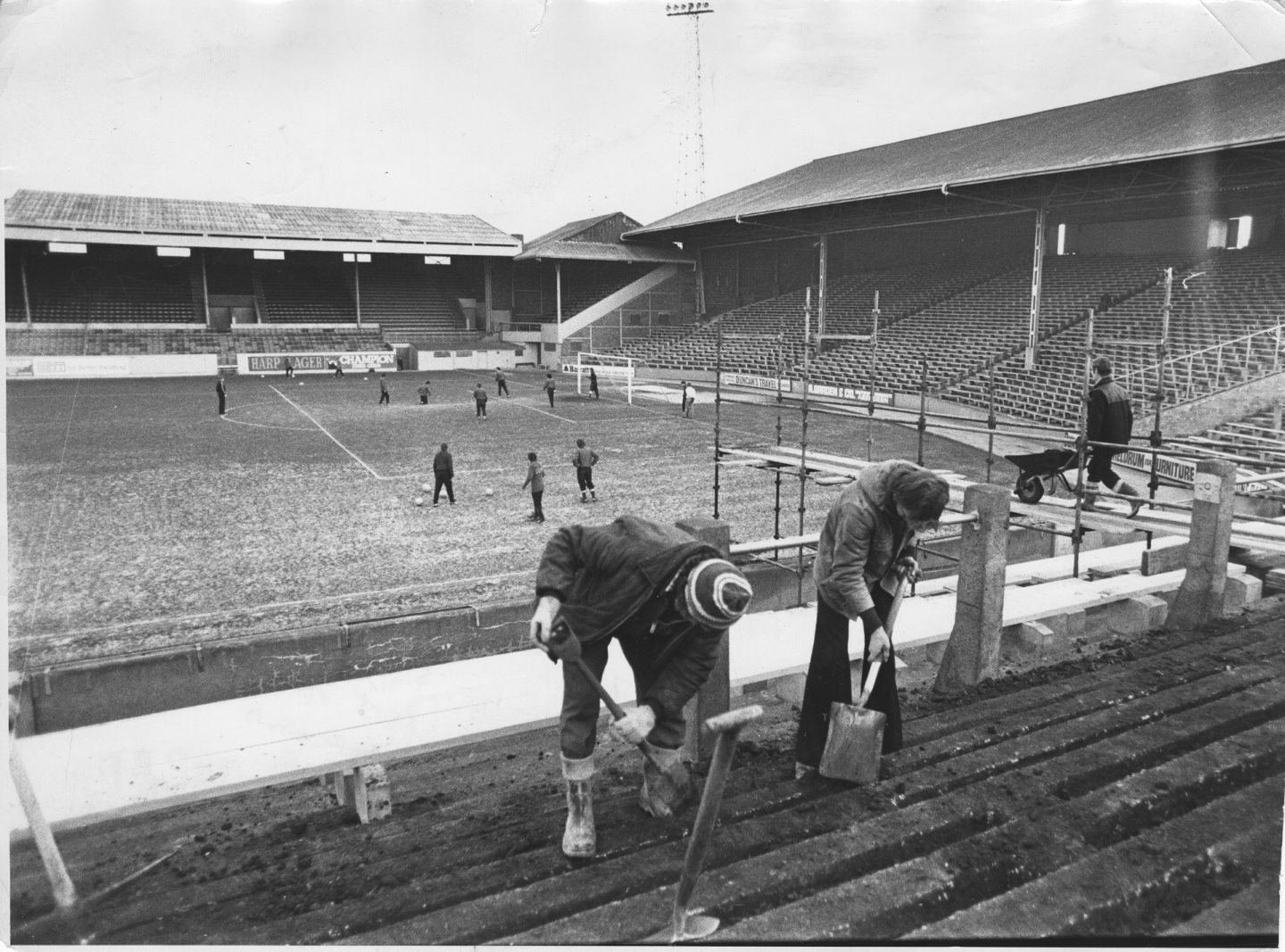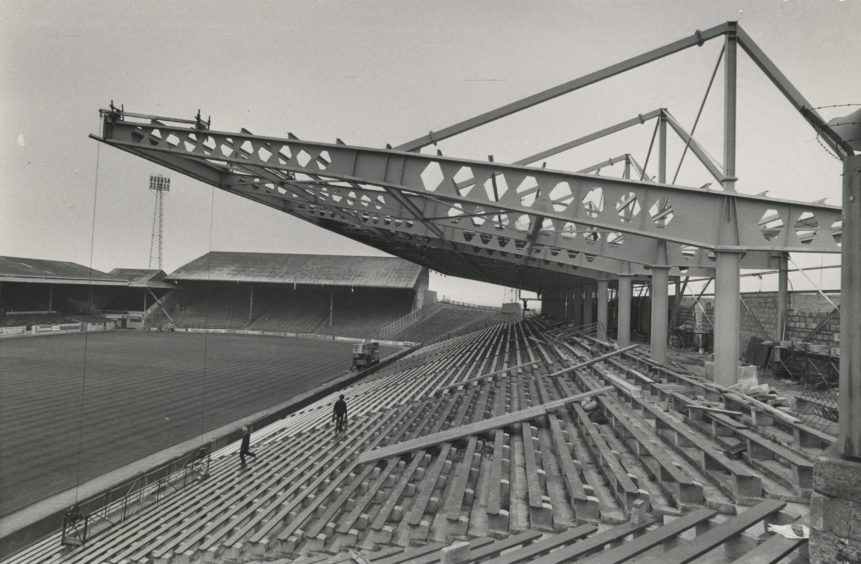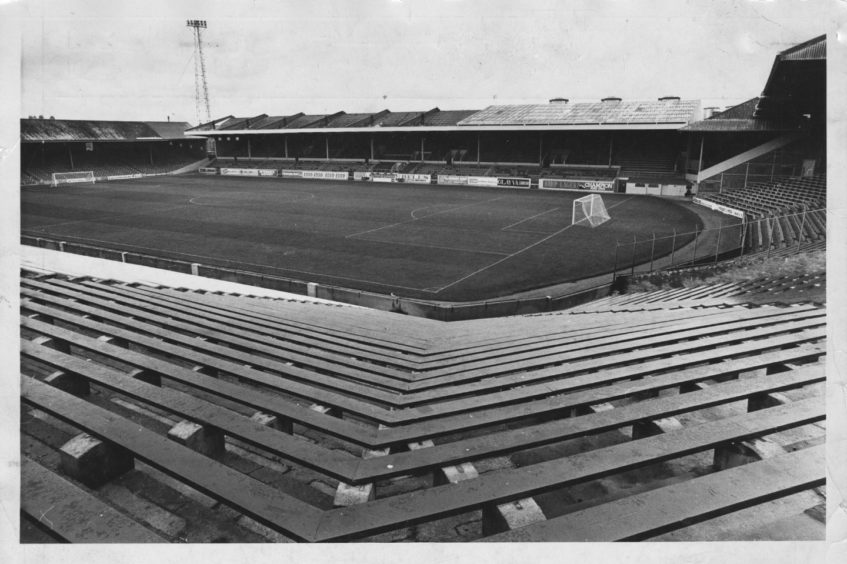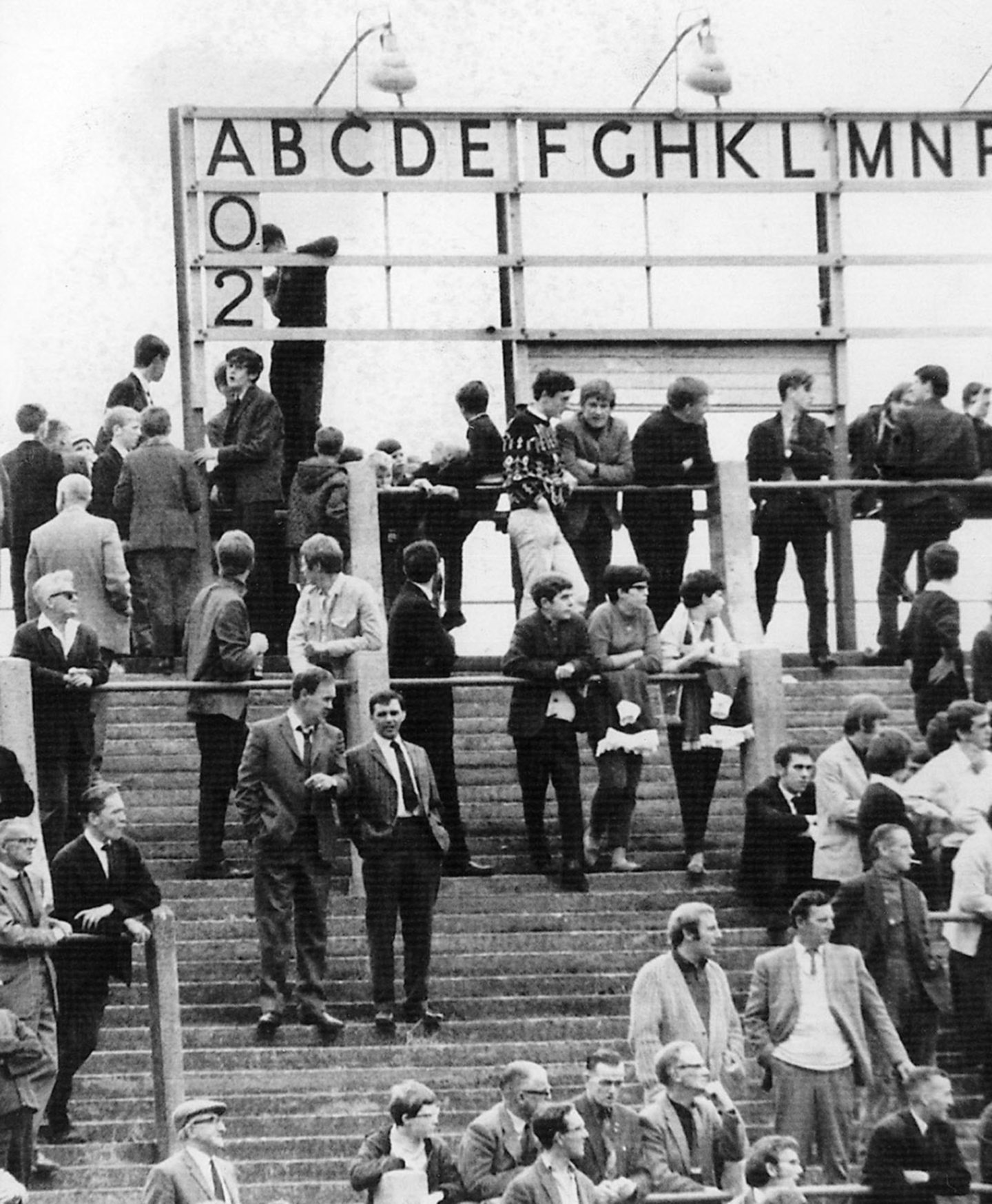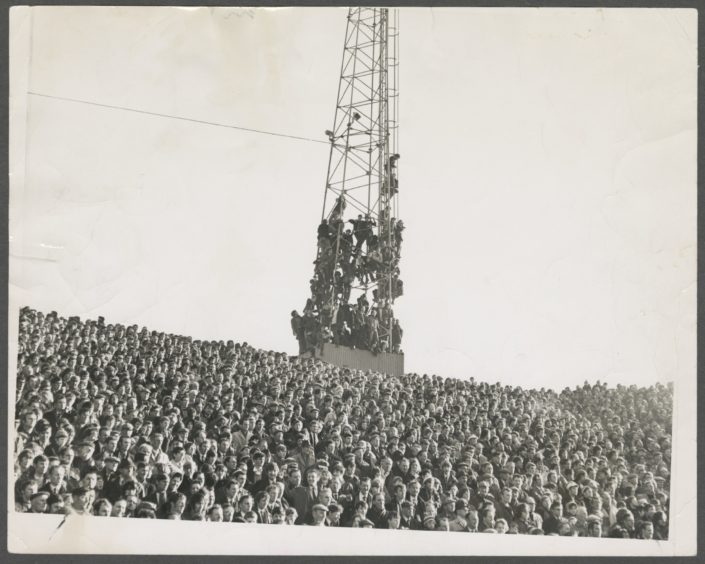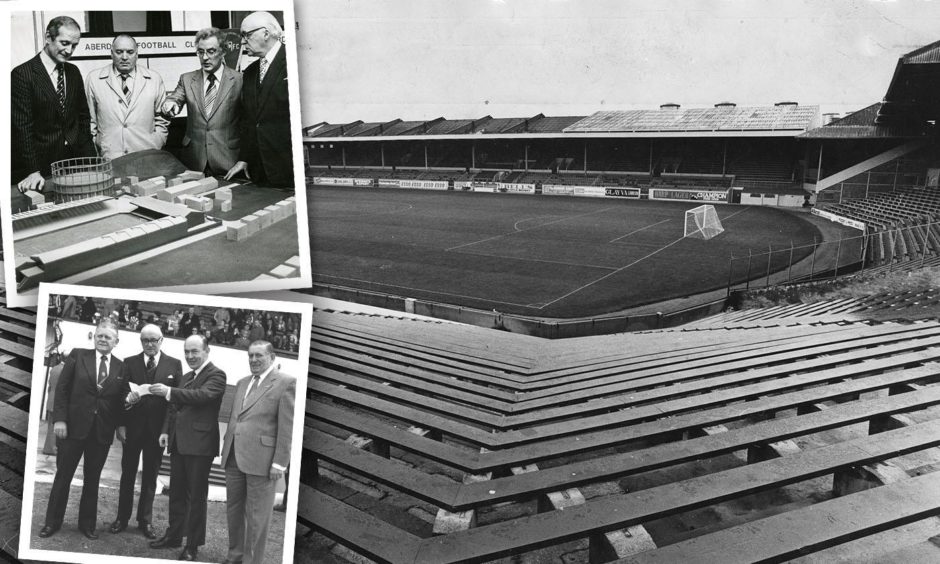
The skies over Aberdeen were fiery on the night of February 5 1971. A blaze had ripped through Pittodrie and emergency services rushed to the scene to deal with what was quickly categorised as a major incident.
The Dons’ chairman, Dick Donald, arrived at the stadium not long after the fire started and, unsurprisingly, it left him feeling concerned and dispirited – even if he was relieved that there was no loss of life during the conflagration.
He said: “This is a big blow after everything was going so well. How it started we may never know.
“The last person here was at 5pm last night. It could not have been an electrical fault, as we have safety switches in place.”
It was a grievous setback for the north-east club, one that effectively cost Eddie Turnbull’s team the Scottish championship in the months thereafter.
Yet, within seven years, Aberdeen had responded to the situation by rebuilding Pittodrie and turning it into Scotland’s first all-seater stadium.
The damage caused by the blaze was estimated at around £100,000 by assessors when they inspected the premises after the firefighters’ work was complete.
However, the builders moved on site within a few weeks and a comprehensive refurbishment began during the summer, as Mr Donald and his colleagues responded to the challenge with the defiant message: “We’ll come back bigger and better from this.”
We reported on the restoration programme on September 29, with the words: “Since the fire happened, a renovated Pittodrie, hailed as the finest ground outside Glasgow, is rising steadily out of the ashes at a cost of around £140,000.
“The centre stand has been restored with brown and red tip-up seats and the new Paddock at the King Street end is now in operation.
“Under the main stand, there is new accommodation for players and officials: showers, a sauna, a plunge bath, dressing rooms, a treatment room – and the day-to-day business of running the club goes on amid the noise of workmen.”
The redevelopment of the stadium was welcomed by the majority of supporters, but the club was determined to advance beyond simply bringing back the status quo.
In the future, we are determined that crowds will have more comfortable accommodation.”
Club secretary Ian Taggart
By the mid-1970s, the likes of Mr Donald and assistant chairman Chris Anderson had turned their thoughts to transforming Pittodrie completely and getting rid of the standing areas inside the ground.
This was a decade before most other clubs in Britain had even considered the possibility of creating all-seater venues.
And it was 20 years in advance of the implementation of the Taylor Report, following disasters at several football arenas, including the Bradford fire and the Heysel tragedies, which occurred within three weeks of each other in 1985 and, most notably, the carnage of Hillsborough in 1989.
As the 1970s progressed, the forward-thinking Donald and Anderson, aided by secretary Ian Taggart and other club officials, were the catalysts for the bold plan, even as they were bringing such high-profile management figures as Ally McLeod and Billy McNeill to Pittodrie in the years before the arrival of Alex Ferguson.
The directors talked to a number of construction companies and liaised with Aberdeen City Council to devise the best ways of moving forward and a decision was eventually taken that ensured there would be no more occasions – in theory at least – where tall lads in bunnets blithely obscured the view of all those behind them.
Instead, there would be seats for spectators in the main stand, and throughout the rest of the ground, as work began on the ambitious new project at the end of 1977.
We carried a story in January 1978 that demonstrated the rapid progress that had been made on the ground-breaking venture.
Headlined “Everyone has a goal at Pittodrie”, the piece outlined the myriad different aspects through which the club was being revitalised, both on and off the field.
And it allowed Mr Taggart to explain how the process of refurbishing the ground was proceeding, less than a decade after the fire had threatened the stadium’s very existence.
He said: “In the future, we are determined that crowds will have more comfortable accommodation.
“The work going on to improve the present open terracing part of the ground is being done in two stages.
“The first, bench seating for everyone, is under way and, weather and matches permitting, should be finished by the end of the season.
“The next date is to cover the seating, but no timescale has been set for that (it subsequently happened within the next two years).
“When you cover the rest of the ground, you seal it from the wind and the sun, which you need to dry the pitch, so it isn’t straightforward.
“Until then, there will be supporters sitting in seats which are sometimes wet, so we hope we are able to resolve that.”
He and his colleagues needn’t have worried on that score. Some Dons aficionados might have preferred to continue standing but they were jumping out of their seats often enough – for all the right reasons – in the next five years as league titles, domestic trophies and European baubles cascaded into Pittodrie.
In late 1978 it became just the second all-seater stadium in Britain – Coventry’s Highfield Road led the way in England – despite some supporters expressing misgivings in the letters pages of the Press and Journal and the Evening Express.
One fan, Iain Cameron from Dyce, wrote: “It might seem a good idea to have everybody sitting down.
“However, it will be far from ideal in the middle of winter or when it’s raining heavily and worse still if we have the annual staple of frost in Aberdeen.
“Nobody will want to go home with their coats and jackets covered in rain and snow. Shouldn’t we have been given the chance to express our views on the subject?”
That, however, was not a perspective shared by many. Indeed, such was the positive response to the introduction of seats that, just a year later, proposals were unveiled to make the north-east ground the first all-covered, all-seated venue in the UK.
The Press and Journal reported on December 19 1979: “Pittodrie stadium will be years ahead of any English ground by the end of next season.
“Don’t just take our word for it, the English FA secretary Ted Croker can verify it.
“For while Aberdeen plan to have the entire stadium covered and seated by the summer of 1981, Mr Croker has conceded that the same thing will not happen in England until “sometime next decade”.
The Aberdeen FC Heritage Trust has confirmed there were initial plans to install seats within the stadium as long ago as 1946.
Chris Gavin sent us a cutting from the P&J from December 24 that highlighted the proposals being considered shortly after the Second World War.
With the headline “South Stand for Pittodrie”, the story reads: “Aberdeen FC are hopeful of erecting a new stand on the south side of the field.
“Plans have been completed and will be submitted to Aberdeen Town Council in the hope that the club will be able to purchase a stretch of ground.”
Mr Gavin said: “The aim of the club to develop seating round Pittodrie goes back to at least 1946 when the board announced that they were looking to build a new stand on the south side of Pittodrie.
“The roof on the South Stand was definitely needed as it was unreasonable to expect people to sit on those uncovered benches in pouring rain or snow.”
It would be more than 30 years before the scheme finally came to fruition.
But the Dons were certainly at the dawn of something that we all take for granted these days.
